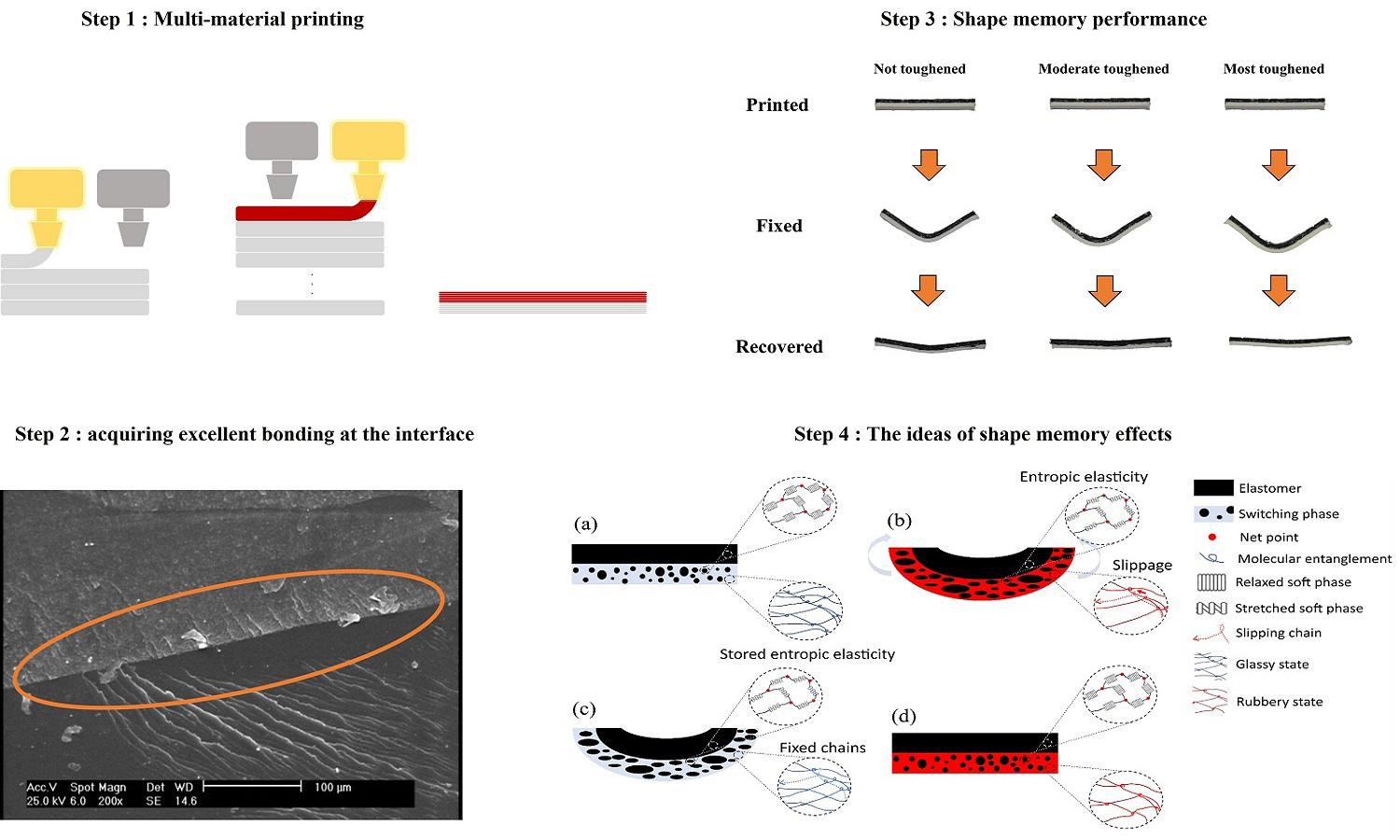Four-dimensional printing of acrylonitrile butadiene styrene – thermoplastic polyurethane shape memory polymers with excellent material and interfacial adhesion performance
Kianoosh Soltanmohammadi, Mohammad Aberoumand, Davood Rahmatabadi, Elyas Soleyman, Sogol Ghasemi, Ismaeil Ghasemi, Majid Baniassadi, Karen Abrinia, Mahdi Bodaghi, Mostafa Baghani
Vol. 17., No.11., Pages 1082-1095, 2023
DOI: 10.3144/expresspolymlett.2023.82
DOI: 10.3144/expresspolymlett.2023.82
GRAPHICAL ABSTRACT

ABSTRACT
There
are a limited number of thermoplastics with intrinsic shape memory effect (SME)
that are four-dimensional (4D) printable. Development of other shape memory
polymers (SMPs) entails synthesis with a complicated chemical experimental lab
effort. In this paper, for the first time, a novel layered multi-material
structure is developed based on a deep comprehension of SMEs’ macromolecular
requisites. The fused deposition modeling (FDM) method is used for the
four-dimensional printing of layered structures whose base materials show no
SME. Commercial acrylonitrile butadiene styrene (ABS), toughened
ABS-thermoplastic polyurethane (TPU) blend, and TPU, all with no SME, are used
to fabricate bi-layers of ABSTPU blends and TPU with different volumetric
proportions. Different thermo-mechanical tests, including dynamic mechanical thermal
analysis (DMTA), and constrained and free shape recovery, are conducted. Also,
the interfacial properties of the layered 4D printed structure are assessed by
the mean of shear testing and scanning electron microscopy (SEM). Experimental results
reveal that the 4D printed bi-layer composites possess a high level of
programmability, SME (90–96%), and perfect interfaces without any porosity and
detachment between layers. The results of this research can potentially
eliminate the desperate need for SMPs for 4D printing and broaden the
opportunity to have smart parts using commercial thermoplastics.



